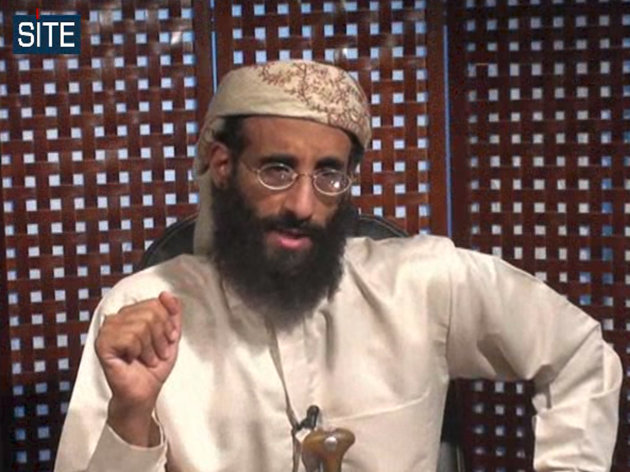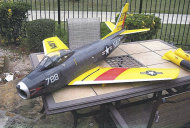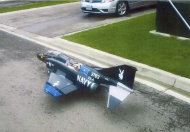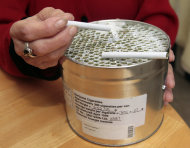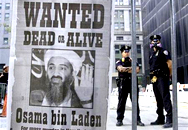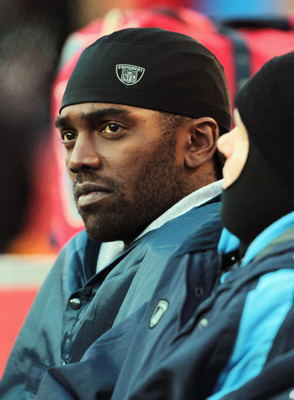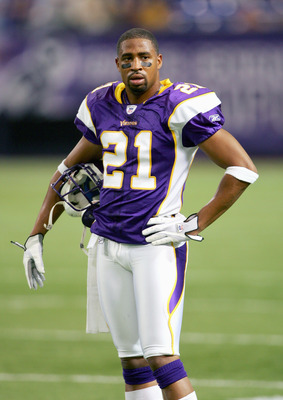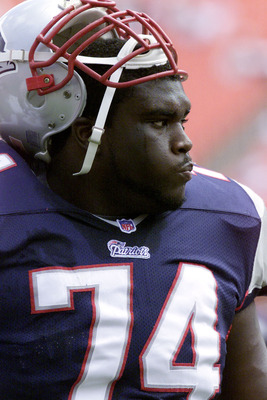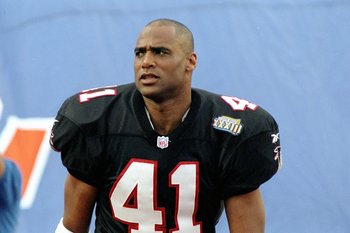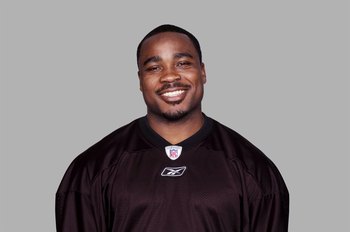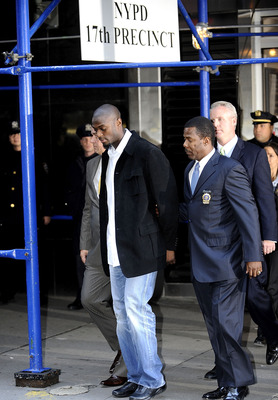Killing Americans: On uncharted ground in attack
 By MATT APUZZO - Associated Press | AP – 1 hr 17 mins ago
By MATT APUZZO - Associated Press | AP – 1 hr 17 mins agoWASHINGTON (AP) — President Barack Obama steered the nation's war machine into uncharted territory Friday when a U.S. drone attacked a convoy in Yemen and killed two American citizens who had become central figures in al-Qaida.
It was believed to be the first instance in which a U.S. citizen was tracked and executed based on secret intelligence and the president's say-so. And it raised major questions about the limitations of presidential power.
Anwar al-Awlaki, the target of the U.S. drone attack, was one of the best-known al-Qaida figures after Osama bin Laden. American intelligence officials had linked him to two nearly catastrophic attacks on U.S.-bound planes, an airliner on Christmas 2009 and cargo planes last year. The second American killed in the drone attack, Samir Kahn, was the editor of Inspire, a slick online magazine aimed at al-Qaida sympathizers in the West.
Late Friday, two U.S. officials said intelligence indicated that the top al-Qaida bomb-maker in Yemen also died in the strike. Ibrahim al-Asiri is the bomb-maker linked to the bomb hidden in the underwear of a Nigerian man accused of trying to blow up a plane over Detroit on Christmas Day 2009.
The officials spoke on condition of anonymity because al-Asiri's death has not officially been confirmed.
Authorities also believe he built the bombs that al-Qaida slipped into printers and shipped to the U.S. last year in a nearly catastrophic attack.
Christopher Boucek, a scholar who studies Yemen and al-Qaida, said al-Asiri was so important to the organization that his death would "overshadow" the news of al-Awlaki and Khan.
In announcing al-Awlaki's death, Obama said, "Al-Qaida and its affiliates will find no safe haven anywhere in the world."
"Working with Yemen and our other allies and partners, we will be determined, we will be deliberate, we will be relentless, we will be resolute in our commitment to destroy terrorist networks that aim to kill Americansm" he said.
Republicans and Democrats alike applauded the decision to launch the fatal assault on the convoy in Yemen.
SORRY THE VIDEO THAT CAME WITH THIS STORY IS NO LONGER AVAILABLE!!!
"It's legal," said Maryland Rep. C.A. Dutch Ruppersberger, the ranking Democrat on the House Intelligence Committee. "It's legitimate and we're taking out someone who has attempted to attack us on numerous occasions. And he was on that list."
That list is the roster of people the White House has authorized the CIA and Pentagon to kill or capture as terrorists. The evidence against them almost always is classified. Targets never know for sure they are on the list, though some surely wouldn't be surprised.
The list has included dozens of names, from little-known mid-level figures in the wilds of Pakistan to bin Laden, who was killed in his compound in a comfortable Pakistani suburb.
Before al-Awlaki, no American had been on the list.But the legal process that led to his death was set in motion a decade ago. On Sept. 17, 2001, President George W. Bush signed a presidential order authorizing the CIA to hunt down terrorists worldwide. The authority was rooted in his power as commander in chief, leading a nation at war with al-Qaida.
The order made no distinction between foreigners and U.S. citizens. If they posed a "continuing and imminent threat" to the United States, they were eligible to be killed, former intelligence officials said.The order was reviewed by top lawyers at the White House, CIA and Justice Department. With the ruins of the World Trade Center still smoking, there was little discussion about whether U.S. citizens should have more protection, the officials recalled, speaking on condition of anonymity because they were not authorized to discuss the matter. The feeling was that the government needed — and had — broad authority to find and kill terrorists who were trying to strike the U.S.
The CIA first faced the issue in November 2002, when it launched a Predator drone attack in Yemen. An American terror suspect who had fled there, Kamal Derwish, was killed by Hellfire missiles launched on his caravan.
The Bush administration said Derwish wasn't the target. The attack was intended for Yemeni al-Qaida leader Abu Ali al-Harithi. But officials said even then that, if it ever came to it, they had the authority to kill an American.
"I can assure you that no constitutional questions are raised here. There are authorities that the president can give to officials," Condoleezza Rice, Bush's national security adviser, said. "He's well within the balance of accepted practice and the letter of his constitutional authority."
Al-Awlaki had not then emerged as a leading al-Qaida figure. Before the Sept. 11, 2001, terrorist attacks, the New Mexico-born cleric had been a preacher at the northern Virginia mosque attended briefly by two hijackers. He was interviewed but never charged by the FBI.But at the CIA, the officers in charge of finding targets knew it was only a matter of time before they would set the Predator drone's high-definition sights on an American.
"We knew at some point there would have to be a straight call made on this," one former senior intelligence official said.
It was Obama who ultimately made that call.
After the failed Christmas bombing, the Nigerian suspect told the FBI that he had met with al-Awlaki and said he was instrumental in the plot. Al-Awlaki had also called for attacks on Americans and had attended meetings with senior al-Qaida leaders in Yemen. Al-Awlaki had gone from an inspirational figure to an operational leader, officials said.
In April 2010, the White House added al-Awlaki's name to the kill-or-capture list. Senior administration officials said they reviewed the Bush administration's executive order and discussed the ramifications of putting an American on the list but said it was a short conversation. They concluded that the president had the authority, both under the congressional declaration of war against al-Qaida and international law.
"Anwar al-Awlaki is acting as a regional commander for al Qaeda in the Arabian Peninsula," White House spokesman Robert Gibbs told reporters in August 2010.What if the U.S. was wrong, Gibbs was asked, what recourse does a citizen have to save himself? The CIA had misidentified and imprisoned the wrong person before. Gibbs sidestepped the question.
The U.S. has been inconsistent in how it describes al-Awlaki. The Treasury Department called him a leader of al-Qaida in Yemen. FBI Director Robert Mueller called him the leader. On Friday, Obama called him "the leader of external operations," the first time he has been described that way.
When word leaked out that al-Awlaki's name was on the list, his family rushed to court to try to stop the government from killing him, saying he had to be afforded the constitutional right to due process.
The idea of killing an American citizen provided critics with fodder for all sorts of comparisons showing the peculiarities of national security law and policy. The government could not listen to al-Awlaki's phone calls without a judge's approval, for instance, but could kill him on the president's say-so. The Obama administration opposed imprisoning terrorist suspects without due process but supported killing them without due process."If the Constitution means anything, it surely means that the president does not have unreviewable authority to summarily execute any American whom he concludes is an enemy of the state," ACLU lawyer Ben Wizner said Friday.
U.S. District Judge John Bates refused to intervene in al-Awlaki's case."This court recognizes the somewhat unsettling nature of its conclusion — that there are circumstances in which the executive's unilateral decision to kill a U.S. citizen overseas is 'constitutionally committed to the political branches' and judicially unreviewable," Bates wrote. "But this case squarely presents such a circumstance."
Like Derwish years ago, Khan, a North Carolina native, was called collateral damage in the drone attack, not the target.
Al-Awlaki may have been the perfect test case for the government. His sermons in English are posted all over the Internet and his name has been associated with several attempted terrorist attacks. In the intelligence community, many regarded him as a bigger threat than bin Laden because of his ability to inspire Westerners and his focus on attacking the U.S.But in taking this step, the Obama administration raised questions about whom else the president has the authority to kill. In principle, such an attack could probably not happen inside the United States because the CIA is forbidden from operating here and the military is limited in what operations it can carry out domestically. But civil rights groups have questioned whether the government has opened the door to that possibility.
At the White House, spokesman Jay Carney refused to even acknowledge the government's direct role in killing al-Awlaki. He repeatedly ducked questions about the extent of Obama's authority and said only that al-Awlaki had been an operational leader for al-Qaida."Is there going to be any evidence presented?" Carney was asked.
"You know, I don't have anything for you on that," he responded.
King, the Republican lawmaker, said it was necessary that the president to have the authority to act against those at war with the U.S. And it was no secret to the public, he said, that al-Awlaki was at war. But he acknowledged that it set a precedent that could make people uncomfortable.
"There could be a situation where nobody knows the evidence, where you're relying on the government to say what its intelligence is," King said. "With al-Awlaki, it was clear-cut. He made it a clear call."
___
Associated Press writers Kimberly Dozier and Adam Goldman in Washington and Brian Witte in Annapolis, Md., contributed to this report.
Follow Matt Apuzzo at http://twitter.com/mattapuzzo
